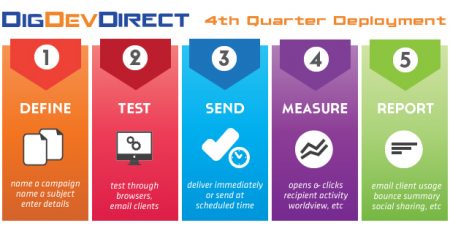REDEFINING RECENCY: WHY DIGDEV’S HOTLINE NUMBERS ARE MORE THAN JUST “NEW TO MARKET”
Perhaps now more than ever, advertisers are seeking hotline data on behalf of their clients. Indeed, new to market data – especially in the current advertising economy, is critical as advertisers scramble to increase their REACH to new potential customers AND ensure recent behaviors that define a requested data set are fresh AND unique so as to offer the highest yield of potential new respondents.
Strategically speaking, the logic behind asking for a hotline file stacks up to more critical scrutiny. At least on the surface. The more new data one has in their potential pools of targets, the higher the possibility of achieving new signups. Right?
Not necessarily. We take a different approach on building our hotline files here at DigDev and, rather than new to market records, put the emphasis on data delivery, data hygiene, data intelligence (the cornerstone of our business) and, most importantly, on the number of RESPONSES we’ve seen in a given period for a given offer with a given target.
Here’s the long and short of WHY we take a less traditional approach to building hotline files and what it means to you as the advertiser:
- DigDev Direct, while being one of the largest sole owners of data in the community maintains over 220MM records on consumers. As of the last census, the US population is right around 330MM… these numbers are important because just as we obtain our data through partnerships with exclusive providers (specifically with our 5k+ partners across the Web), we also help overlay that information from more common data sources (compilers and publishers) from whom information is rarely exclusive (to anyone in the data community). With this many records floating around in DigDev’s database, and ours being one of the largest in the country – if not the largest (and most intelligent), it must be remembered that there is a finite amount of data that floats around the data universe. If we have over 2/3 of the US population in our database and another provider has 1/3 of the population, the chances of all data being unique are literally zero. Across the whole industry this is the case, there will never be a data company dealing with a finite universe that can have ALL unique data. Hence our focus on intelligence, consistent hygiene, delivery and our next bullet, responsivity!
- Since no one data publisher can have solely first party data, DigDev instead uses the amount of mail we send on a monthly basis, along with our robust tracking capabilities, to build a hotline file based on RESPONSE data from our database. Here’s an example:Let’s say we receive the following request:30 days hotline
New movers
NationwideIn this case, DigDev will run a count not just for people that have moved in the past month (why restrict a potentially responsive audience?), but use the logic that exclusion from a file should not be a given even if the person moved in the past 6 months. Consider that we have absolute confirmation of an address change/home purchase along with confirmation of responsivity from either our tracking results or client feedback IN THE PAST MONTH (hotline period requested) on all sends to a “new mover” audience. Your count is going to be much higher, yes. But what will also happen? Your reach will not only be extended, but so will the potential for ROI based on consumer behavior!
What’s advantageous about this approach for yourself and/or your client?
Simple…
Consider that while there may be 70,000 people who are identified new homeowners (totally new to market) in the past month. Great – there’s 70,000 people you’ve never marketed to (assuming files on these individuals are not a part of your client’s database OR have been already purchased through any of the few other data vendors and publishers in the community). Knowing all 70,000 new to market “new homeowners” will not be unique based on the finite nature of data as explained above, not only will this amount of records likely yield minimal responsiveness (just based on sheer volume and statistics, even with guaranteed opens, clicks and click thoughts… or response/redemption of postal mailings), but here’s the kicker:
Not all 70,000 of those new homeowners will be interested in seeing an offer, even if they are a part of your requested pool of consumers. Knowing this and all of the information we’ve already spoken of, why not extend your reach to individuals who have been identified as responsive new homeowners in the past month despite their having purchased a home in the past month?
Knowing that we mail to all of our database on average of 3 times per record/month, that’s 660 MM sent pieces of E-mail to be tracked. That also adds up to a staggering 66MM opens and 6MM clicks on any given file….
With this in mind, consider that John Doe is confirmed as purchasing a new home four months ago, yet DigDev sent several offers to John as a part of a campaign targeting new homeowners in the past month. Through our sends on behalf of our partners, tracking and feedback, we know that John is not only interested in remodeling, but he printed and redeemed a coupon for new exterior paint at Lowes in the past month.
John’s actively spending money. And despite his home purchase taking place four months ago (rather than one) we know that he has spent money, within the requested parameters of the same type of campaign requested in the example above, in the PAST MONTH! That means John should fall under the potential pool of consumers requested in this instance.
Quite simply, the counts have less to do with the forming of hotline data as do the behaviors of the consumers within that pool. Just because someone bought a house four months ago doesn’t mean they’re not responding to new homeowner targeted sends. In John’s case, why leave him out of your pool, knowing he’s spending money in your requested targeting range?
Thinking about hotlines through the lens of responsivity within the requested recency parameters not only helps extend reach, but increase visibility and the potential for ROI through behavioral segregation rather than simple existence of a new to market file. It’s this kind of ‘thinking outside the box’ that has helped DigDev flourish. We understand that this is a relatively unique methodology, but to sum it up:
Would you rather take your chance sending to 70,000 people whom you have no recorded response history on OR take the individuals who have, in the span of your hotline, actually responded to offers targeted just like yours – AND spent money?
The answer should be pretty obvious. But if not, as always, contact your DigDev Rep., with any questions.








Leave a Reply